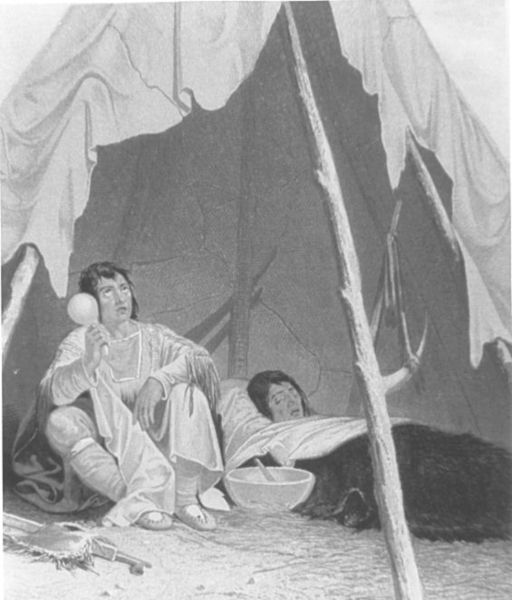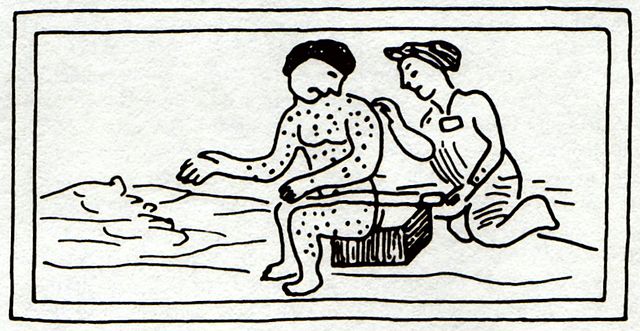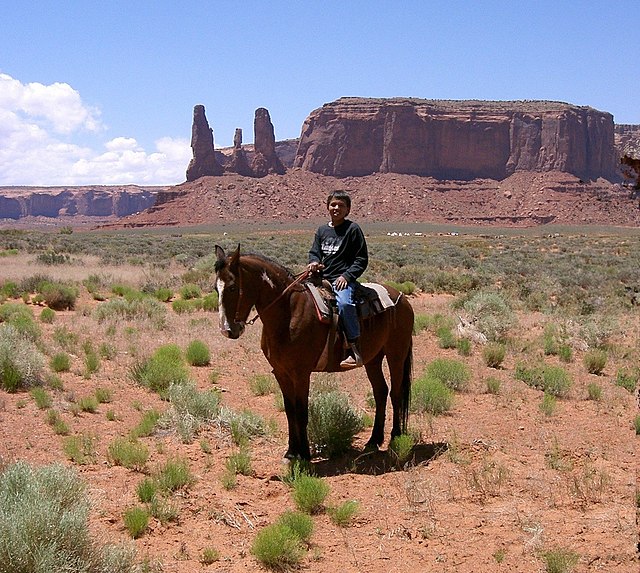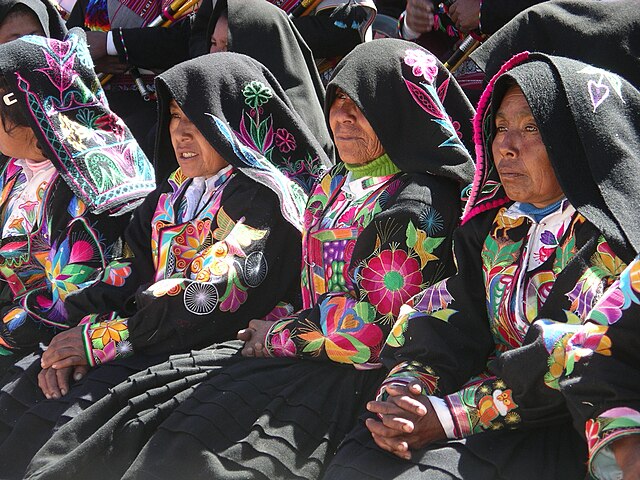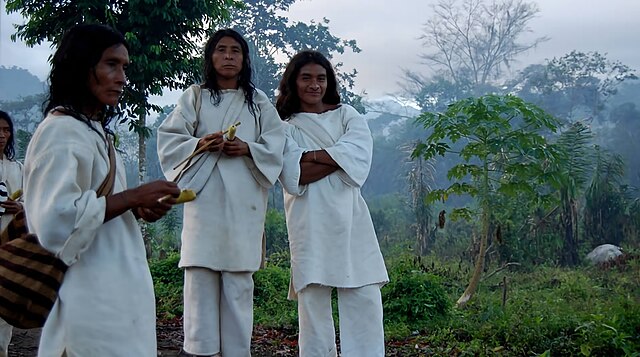Native American disease and epidemics
Although a variety of infectious diseases existed in the Americas in pre-Columbian times, the limited size of the populations, smaller number of domesticated animals with zoonotic diseases, and limited interactions between those populations hampered the transmission of communicable diseases. One notable infectious disease that may be of American origin is syphilis. Aside from that, most of the major infectious diseases known today originated in the Old World. The American era of limited infectious disease ended with the arrival of Europeans in the Americas and the Columbian exchange of microorganisms, including those that cause human diseases. Eurasian infections and epidemics had major effects on Native American life in the colonial period and nineteenth century, especially.
Nineteenth-century American artist's conception of a medicine man caring for a sick American Indian, from an 1857 book illustration.
Sixteenth-century Aztec drawings of victims of smallpox (above) and measles (below)
Image: Measles Aztec drawing
Indigenous peoples of the Americas
The Indigenous peoples of the Americas are groups of people native to a specific region that inhabited the Americas before the arrival of European settlers in the 15th century and the ethnic groups who continue to identify themselves with those peoples.
A Navajo boy in the desert in present-day Monument Valley in Arizona with the "Three Sisters" rock formation in the background in 2007
Wayuu women in the Guajira Peninsula, which comprises parts of Colombia and Venezuela
Quechua women in festive dress on Taquile Island on Lake Titicaca, west of Peru
The Kogi, descendants of the Tairona, are a culturally intact, largely pre-Columbian era society.

